Yvonne Pacanovsky Bobrowicz:
The Cosmic Series
Curated by Barbara Stehle, Ph.D.
April 25, 2024 - June 1, 2024
Opening April 25, 6-8 pm
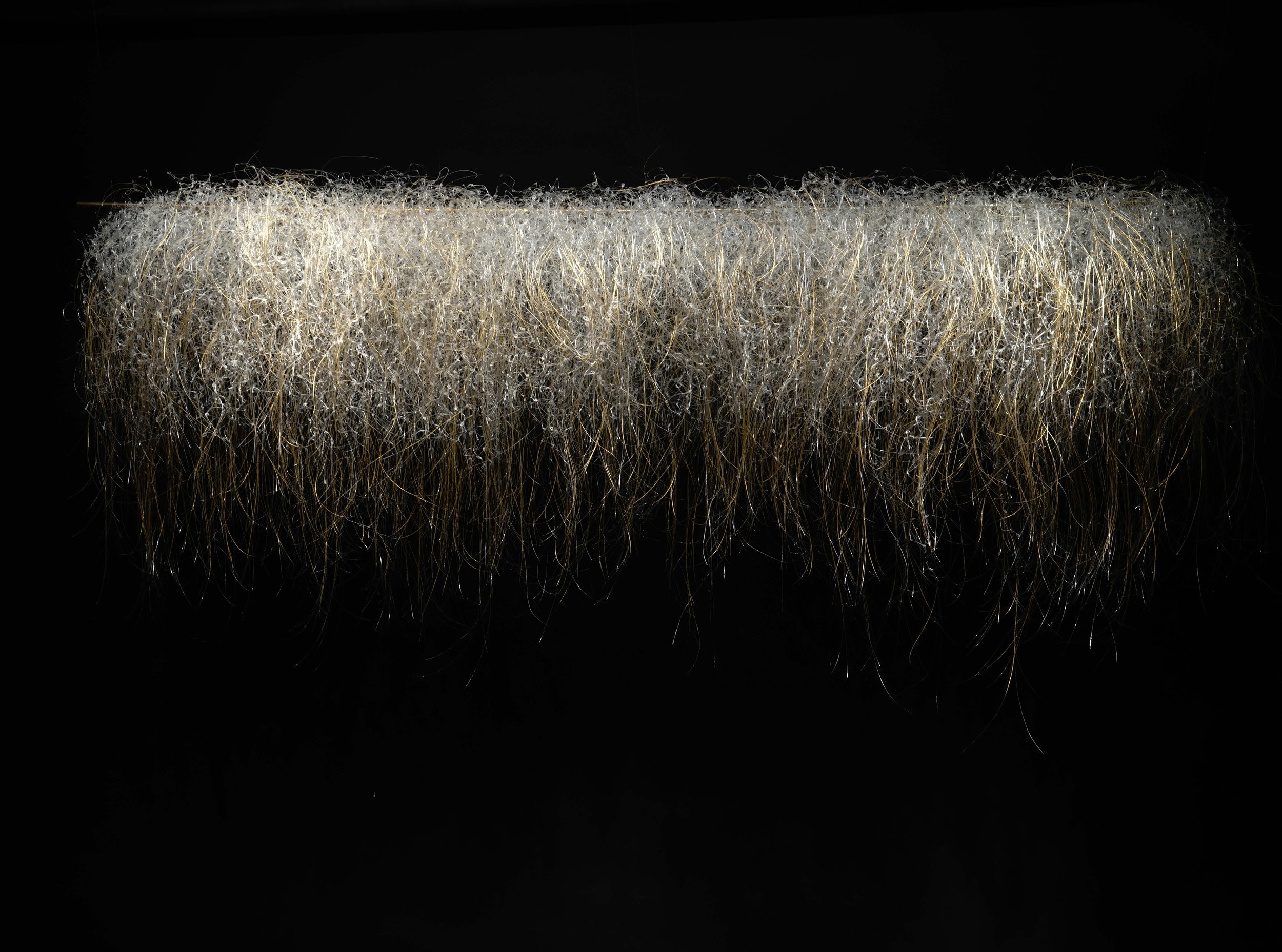
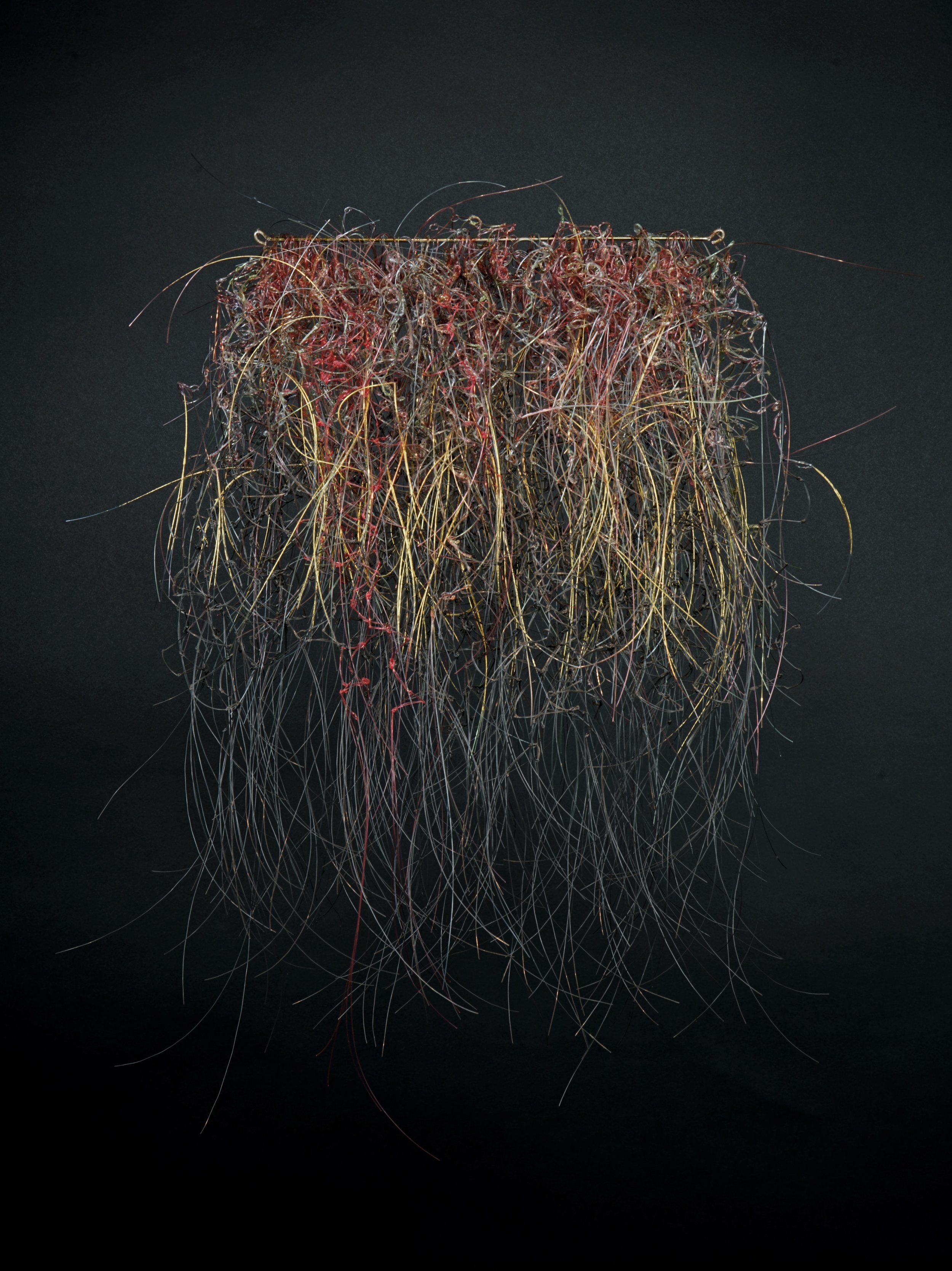
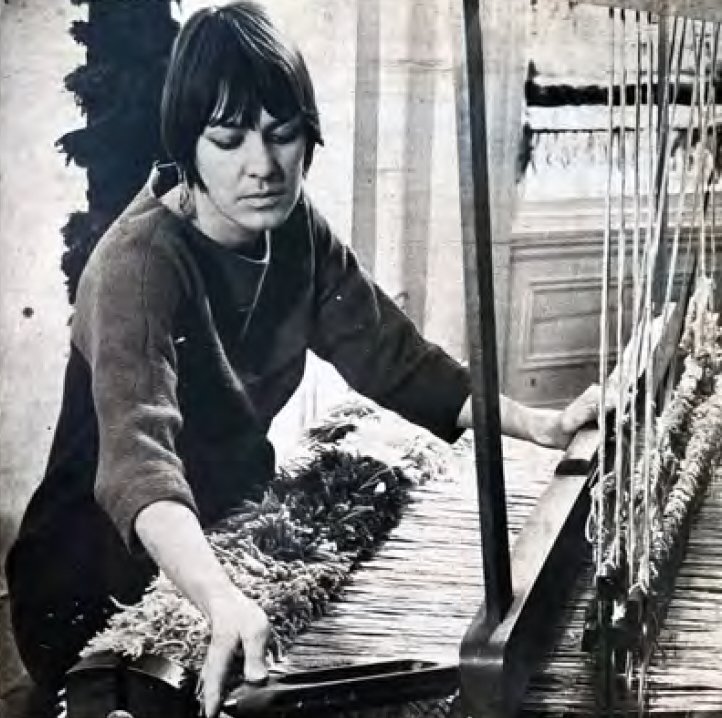
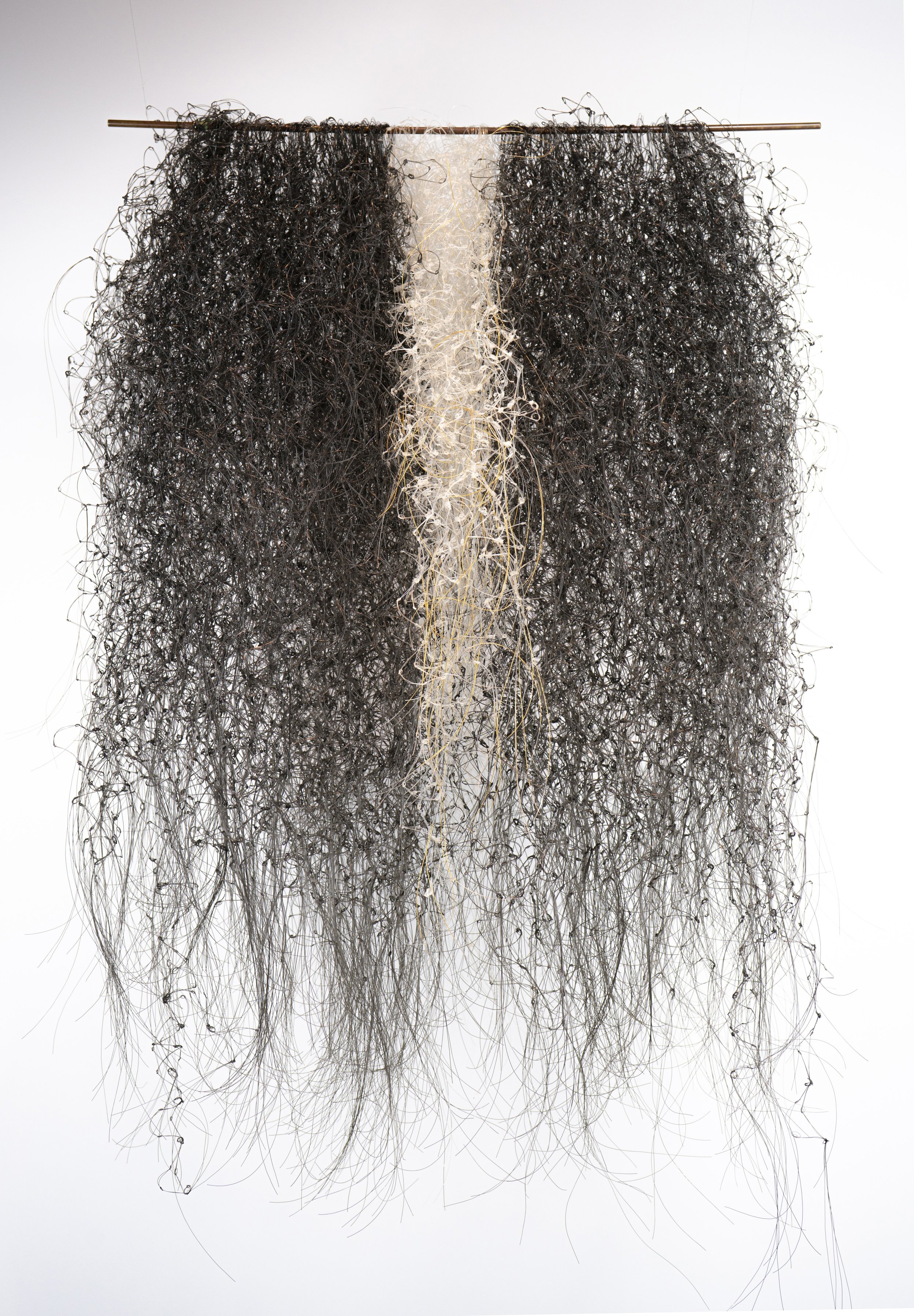
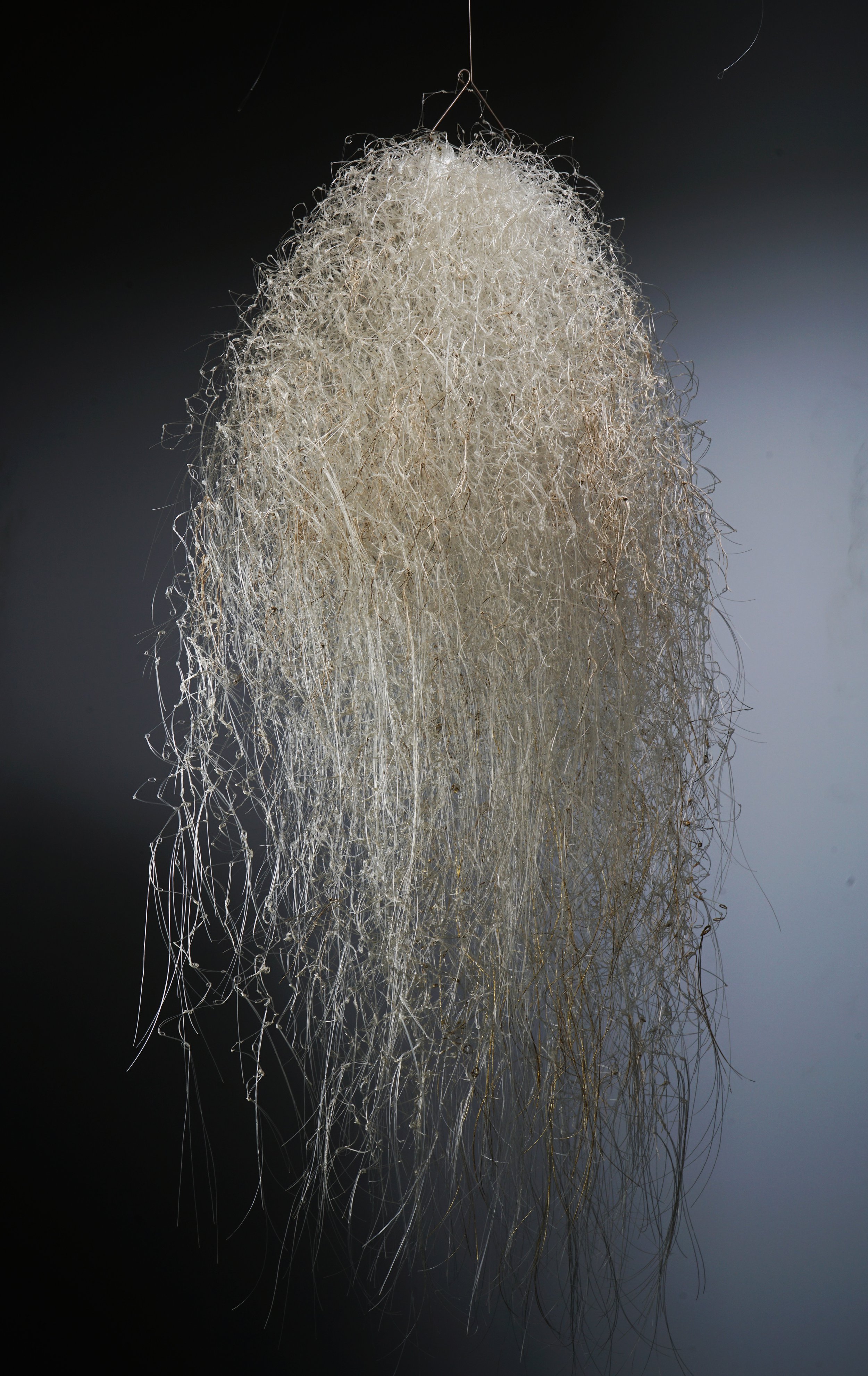

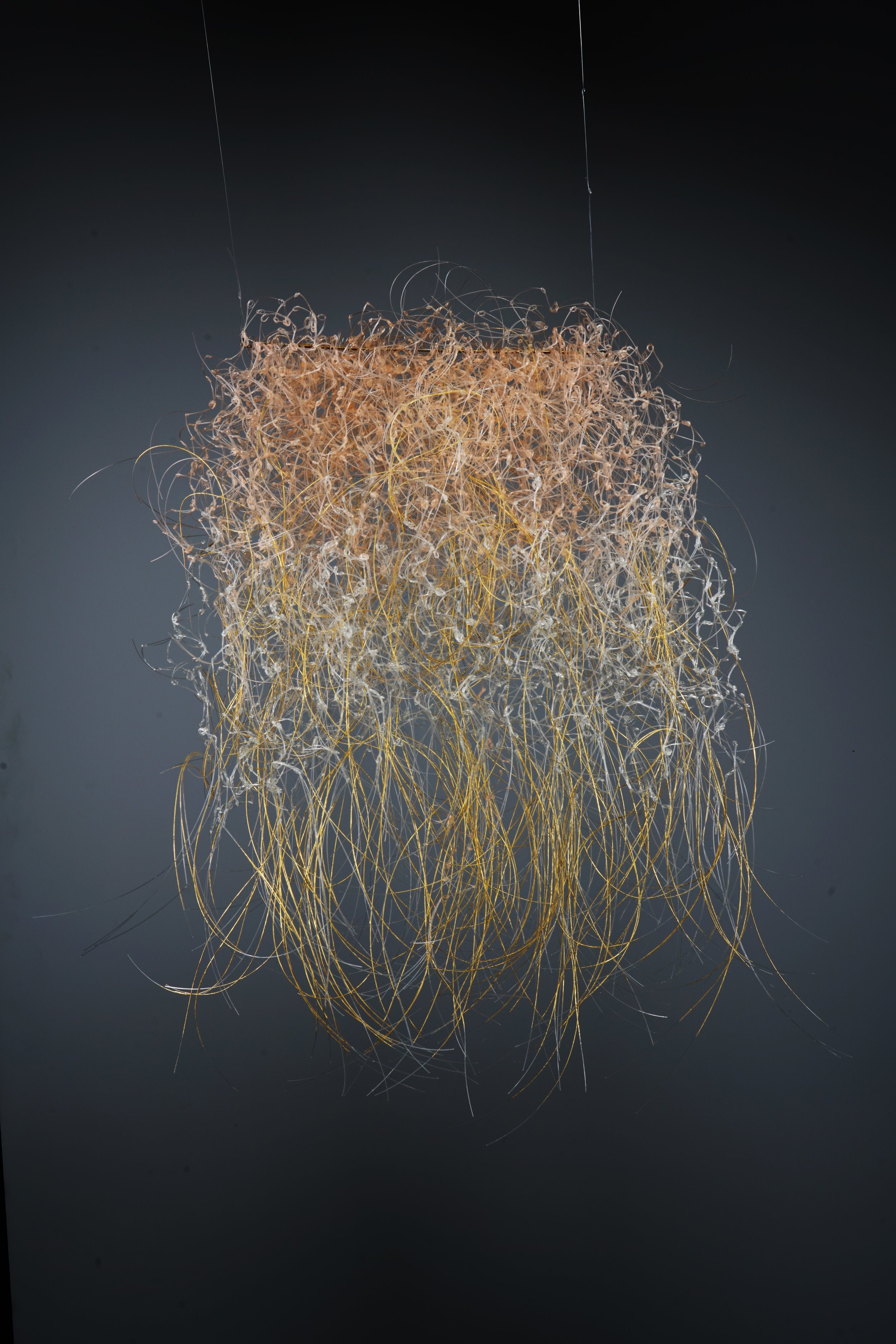
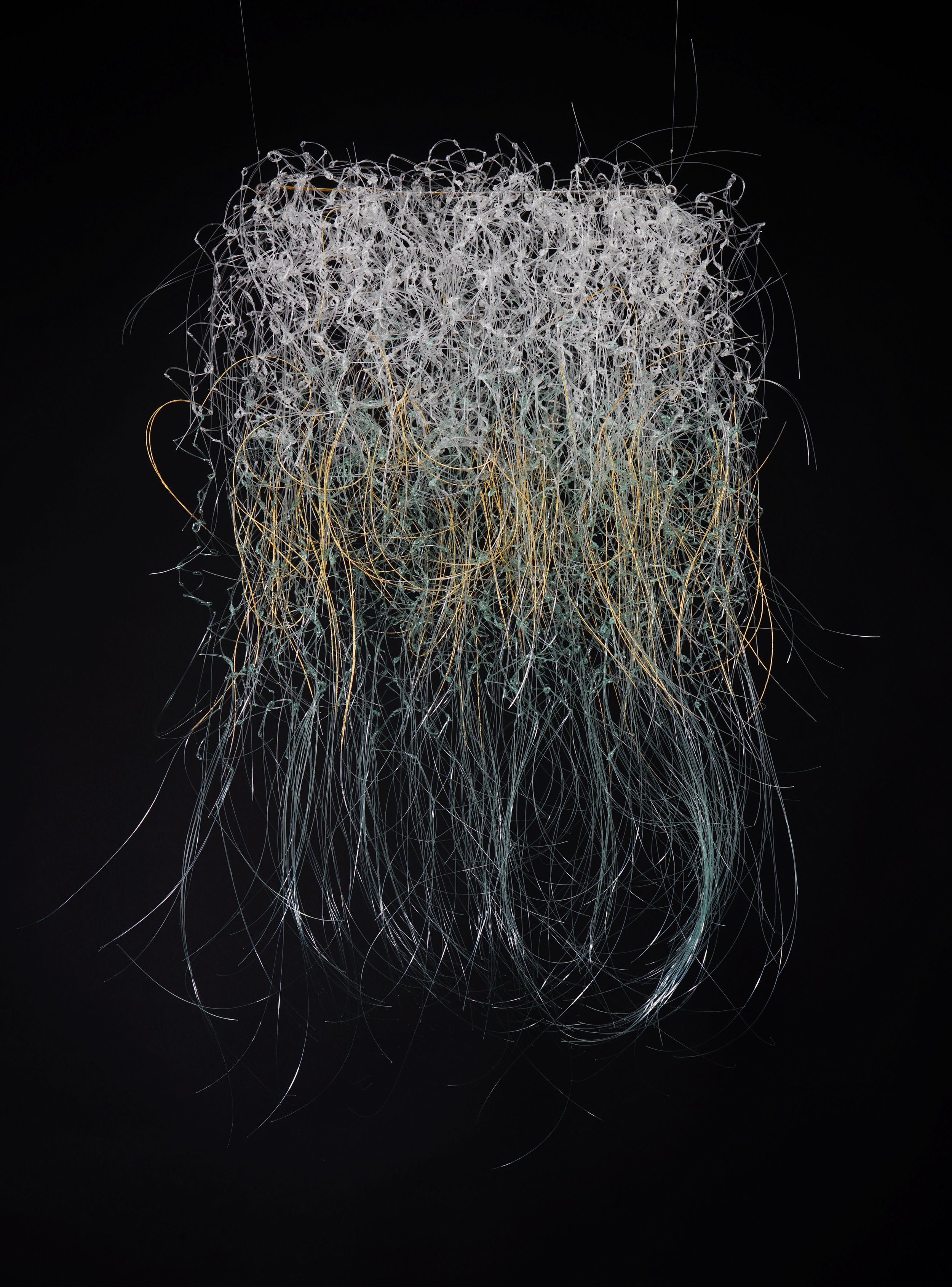
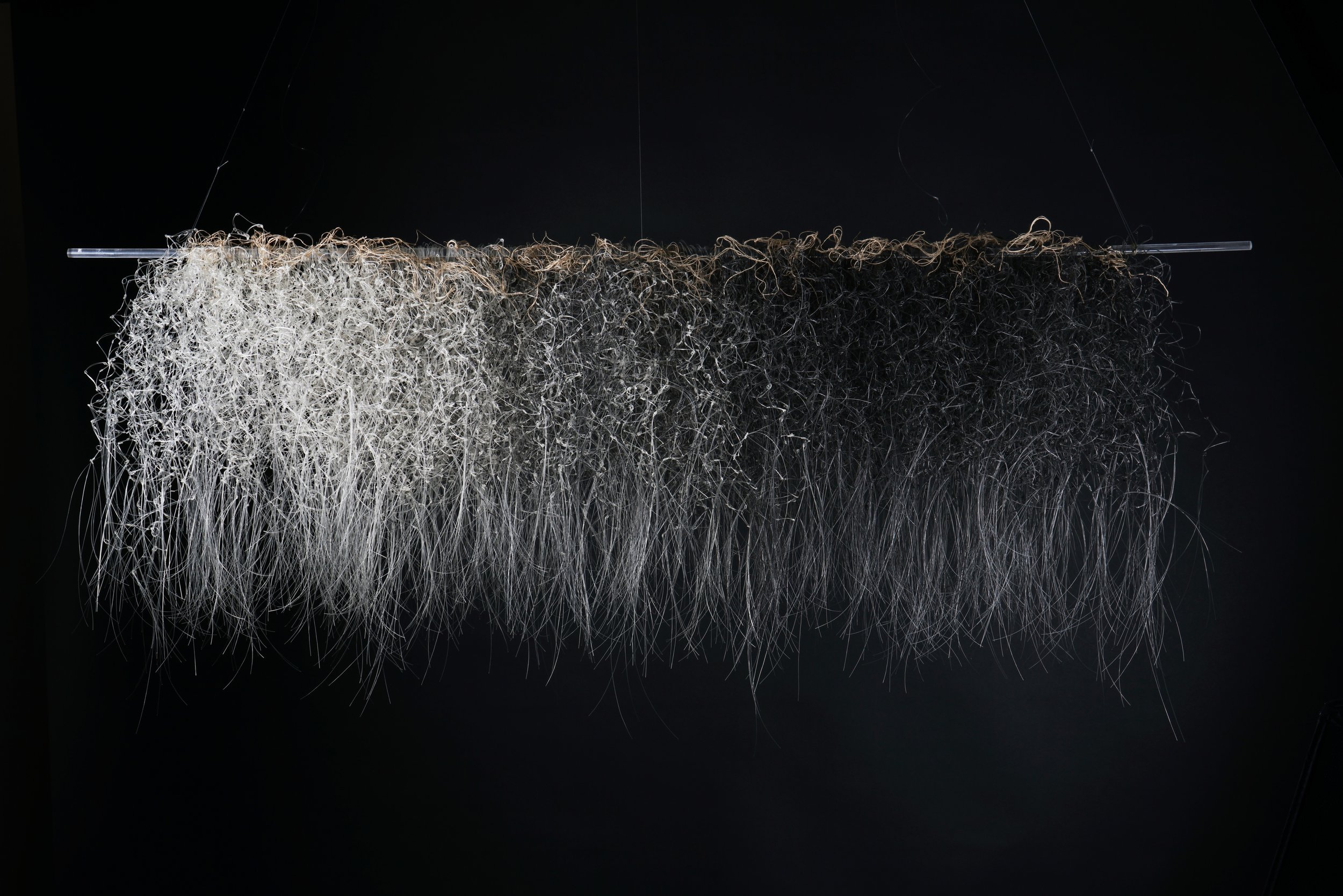
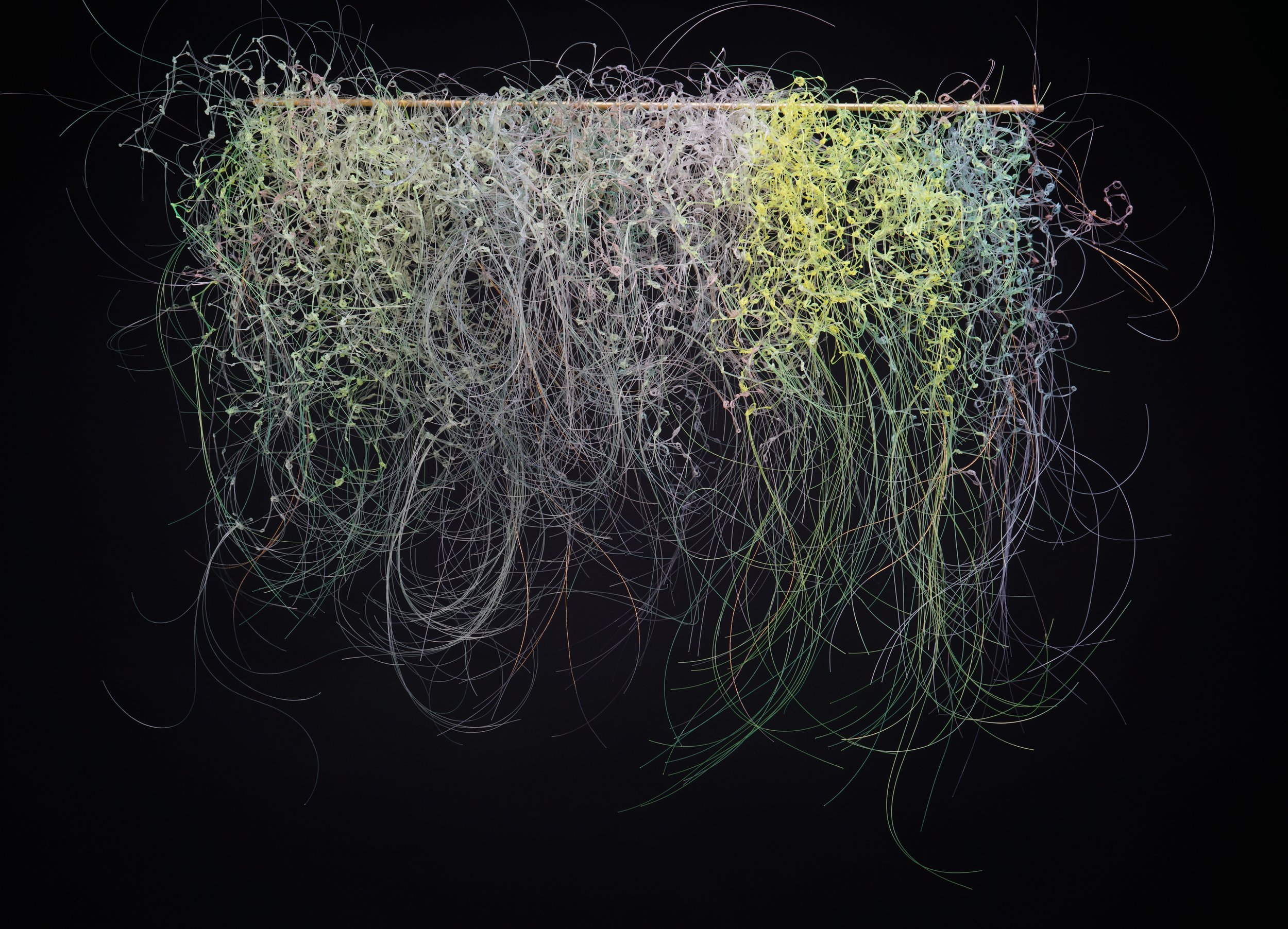
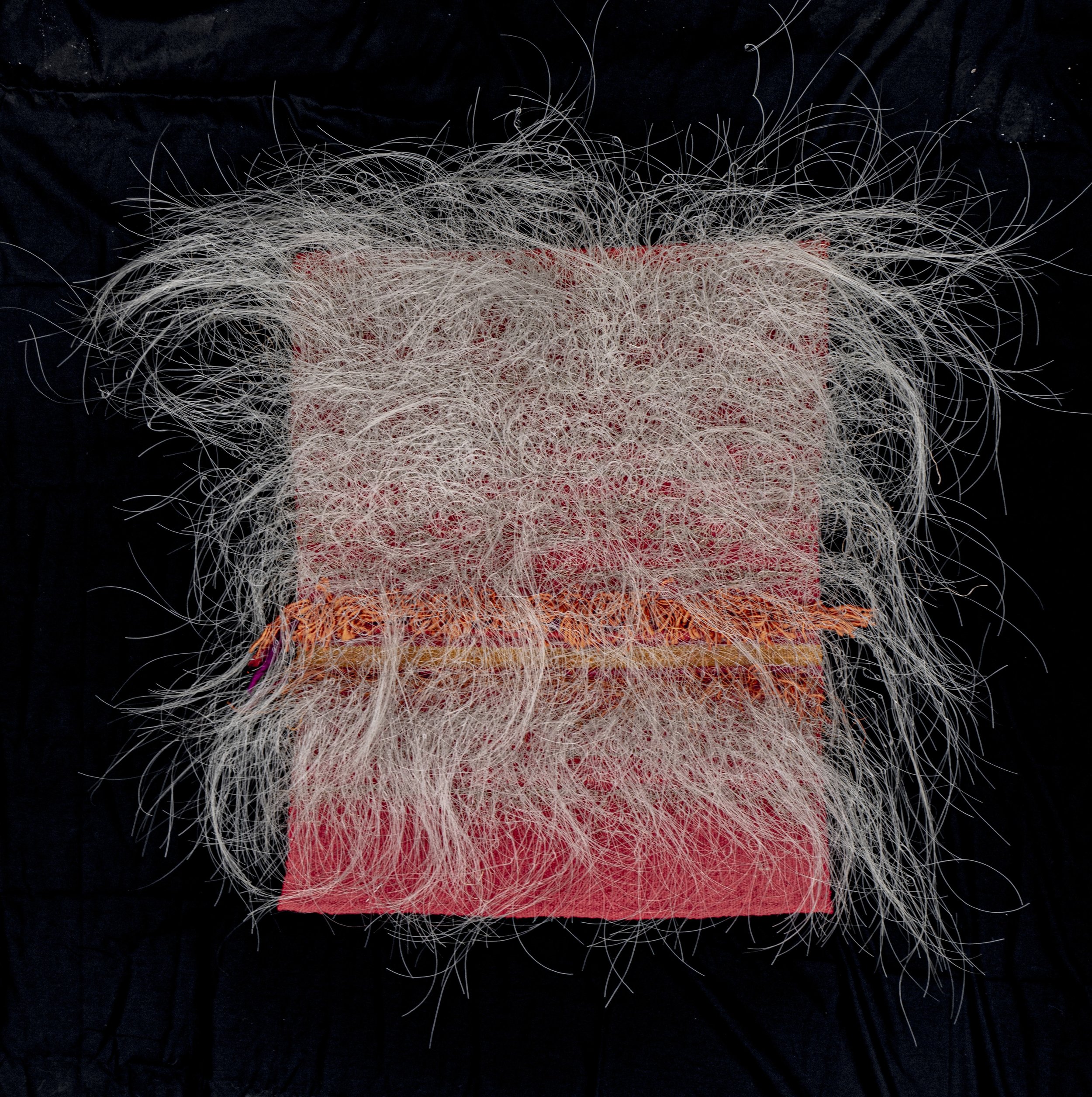
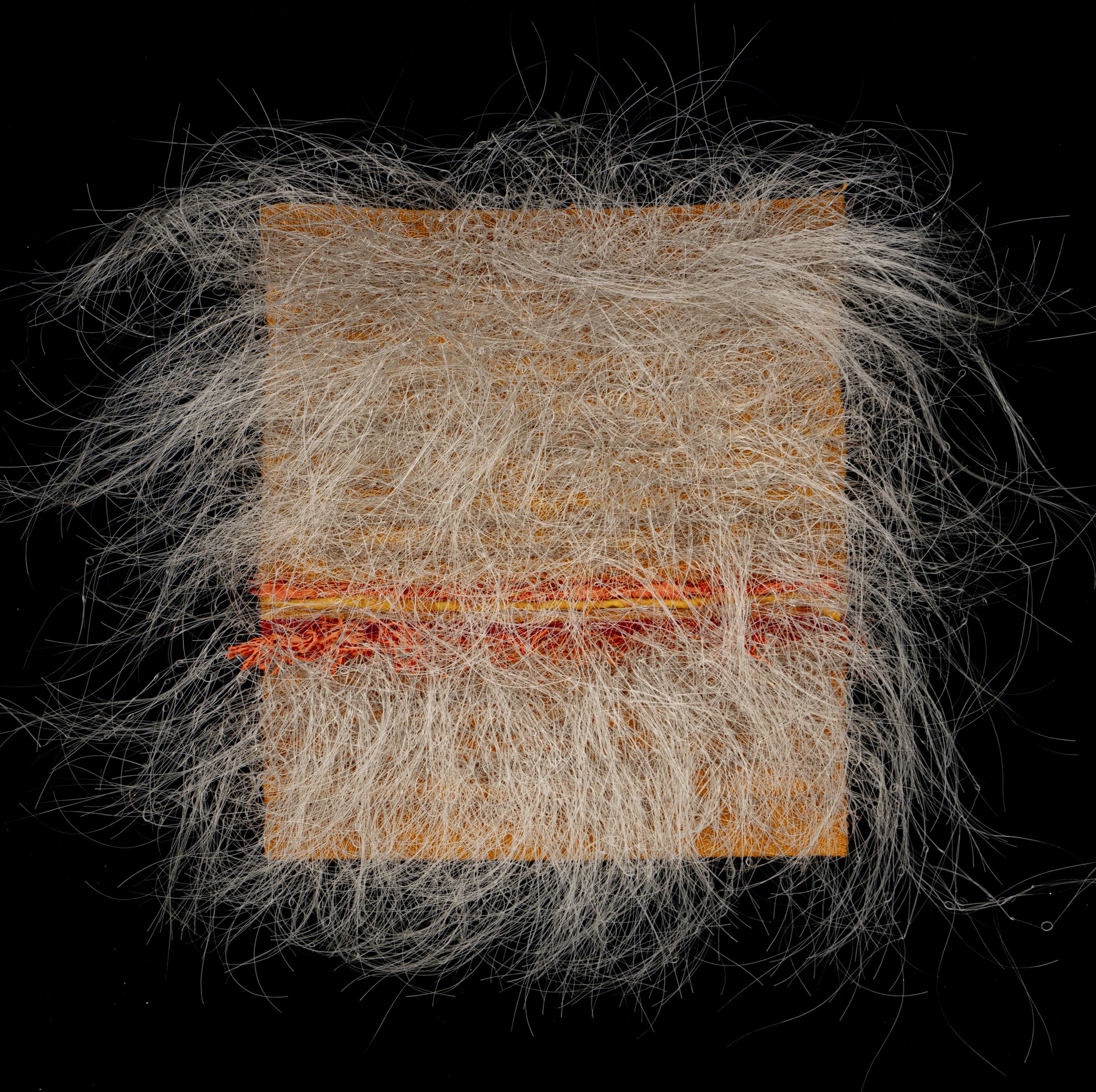
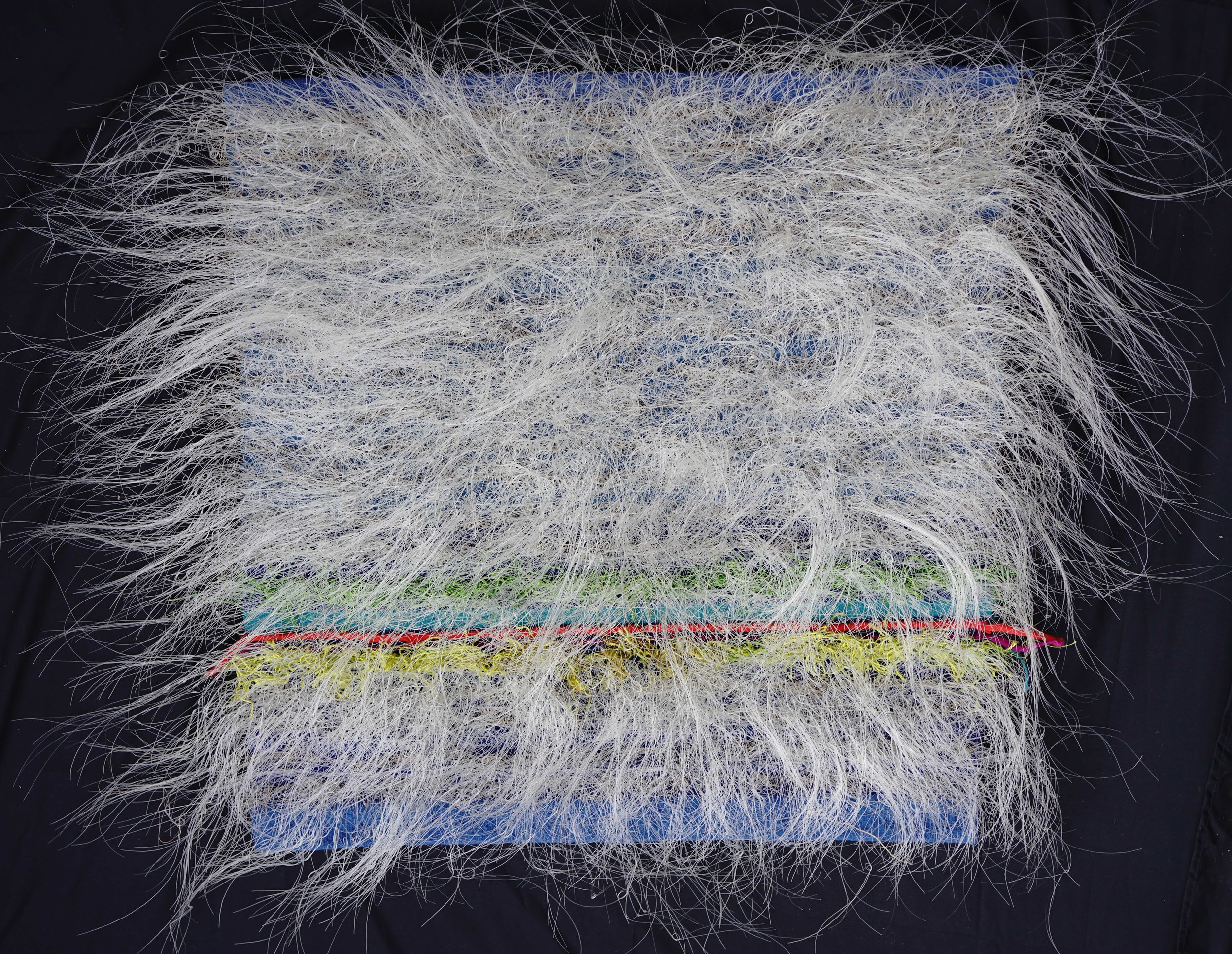
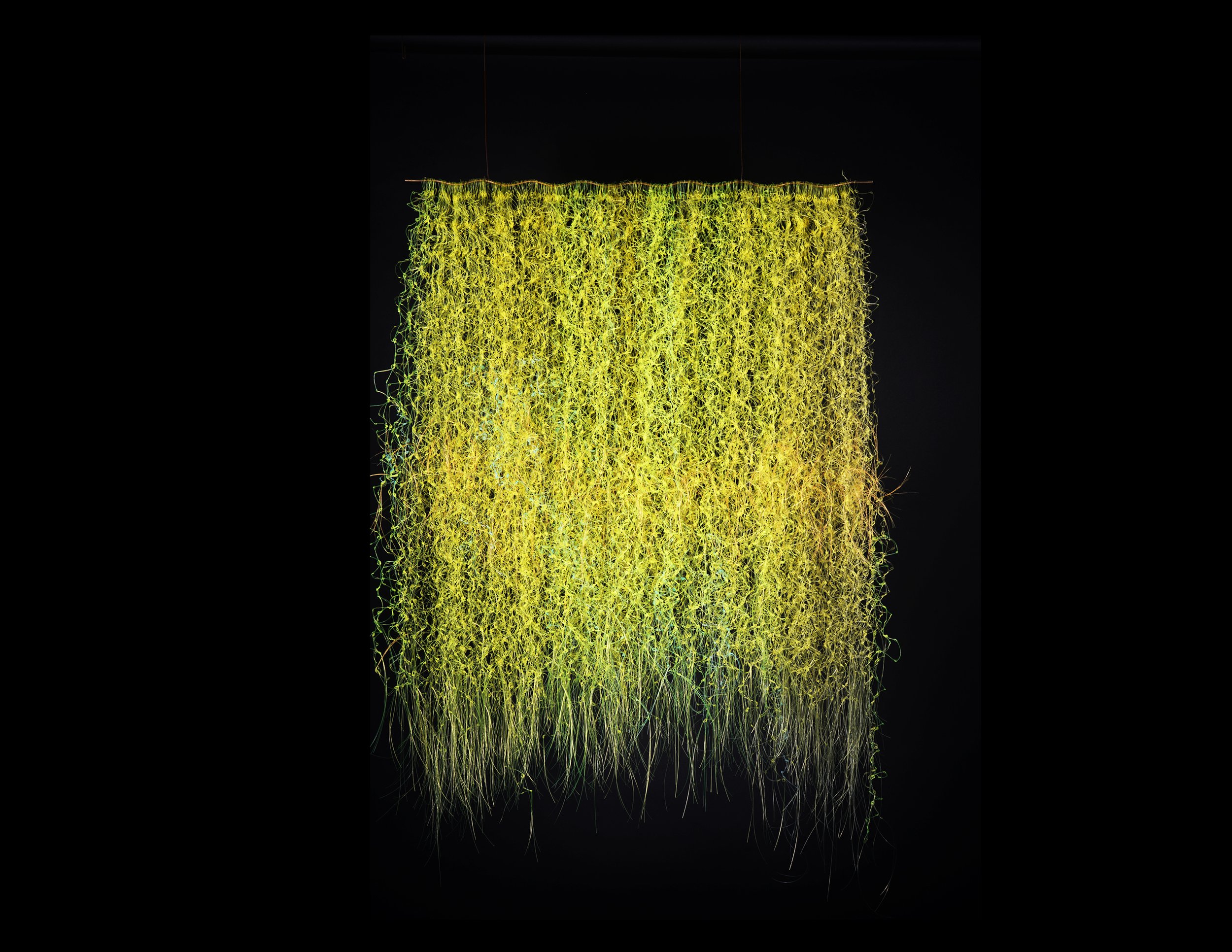
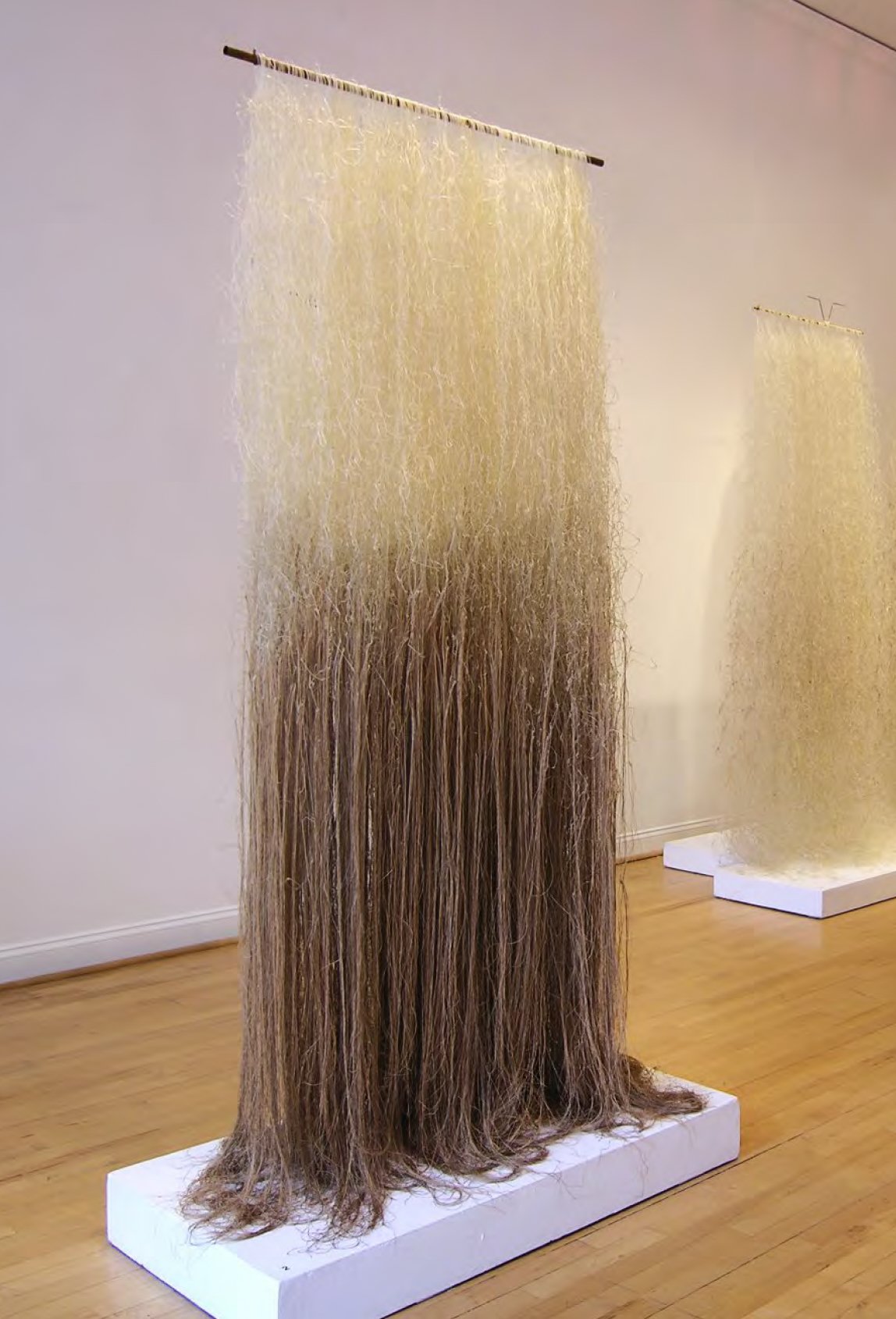

Sapar Contemporary is delighted to present the work of the late pioneering American fiber artist Yvonne Pacanovsky Bobrowicz (1928-2022). The exhibition, curated by Dr. Barbara Stehle, is focused on the artist’s luminous hand-knotted monofilament sculptures from the Cosmic Series, the artist’s final and most iconic series. The Cosmic Series was first presented at the 14th International Biennale of Textiles in Lausanne Switzerland in 1989, and later collected and exhibited by the Art Institute of Chicago and Philadelphia Museum of Art. A few works from earlier periods introduce the evolution of Bobrowicz’s practice that began with studying textiles at The Cranbrook Academy of Art under Marianne Strengell and later with Anni Alberts at the Philadelphia Museum and School of Industrial Art. A remarkable weaver from her very beginnings, Bobrowicz’s final series of hanging knotted monofilament sculptures punctuated with gold leaf, linen, and metal elements stands out for its departure from architectural references. The artist frees herself from the planes of walls and floors, offering her work the power of interacting with open space and light. In these works the artist articulates fully her preoccupation with particle physics and Jungian psychology, her interest in energy fields, constant motion of matter, interaction between matter and light, application of opposing forces and concepts, and order emerging out of chaos.
"I am concerned with expressing interconnections – interconnectedness and continuum. My work has been combining natural materials with synthetics, relating opposites, randomness and order – dark, light, reflective, opaque, illumination to dematerialization, exploring cosmic energy fields. I have been knotting clear monofilament, a man-made fiber that transmits light, combining it with natural linen, opaque and light absorbent, incorporating gold leaf, reflective and alchemically symbolic – unifying them in a variety of densities, scale, and configurations. Monofilament is a flexible medium – moves with air currents – changes with various lighting, natural, seasonal, and artificial. I am interested in kinetics – dynamic pattern/resultant forms in space-time. " Yvonne Pacanovsky Bobrowicz (1928-2022).
The exhibition “Yvonne Pacanovsky Bobrowicz: The Cosmic series”, curated by Dr. Barbara Stehle at Sapar Contemporary, presents for the first time in New York City the artist’s luminous hand-knotted sculptures. About 20 works are included, amongst them a few early wall pieces from the 1980s and the sculptural monofilament “Cosmic series” developed in Bobrowicz's last two decades. The works exemplify her stunning achievements with both natural and man-made materials.
For over 70 years, Yvonne Pacanovsky Bobrowicz worked with a wide variety of fibers and metals to author a new kind of art. Bobrowicz belonged to a generation of weavers that changed the perception of the technique and its production. The actors on the textile artistic scene in the second part of the XXth century were still mostly women (Anni Albers, Sheila Hicks, Olga de Amaral etc…) with a few remarkable exceptions (Jack Lenore Larsen, Ed Rossbach). They pretty much all knew each other, or of each other. They showed their work but struggled to enter museum collections and get the “art” label. But this did not stop the weavers. The field was a territory filled with surprises and inventions. By the early 1970s, their isolation in craft, outside of the art scene, ceased to be. Fibers, knots and weaves entered the vocabulary of process art and the rise of feminism pushed the works forward. Fiber artists contributed some of the most powerful creations of the period. And Yvonne Pacanovsky Bobrowicz was one of them.
Yvonne Pacanovsky Bobrowicz was born in 1928 in a family of makers. Art was in her genes. Her father was a traditional wood carver and furniture maker who walked across Europe from his native Slovakia to board a boat to America. Yvonne’s mother was an artist. She had grown up in Newark from a family of German emigrants. Bobrowicz says of her that she was “a wonderful designer,” who “worked a lot in textile” and was a “great colorist." Her parents ran a wood and upholstery business together until the depression closed it down. But throughout her childhood, they filled life with a sense of esthetic and purpose that inspired Yvonne. They supported her desire to go to art school.
A relative of the Pacanovsky’s taught at Cranbrook Academy of Art. It was a perfect fit for Yvonne. Like the Bauhaus and Black Mountain College, Cranbrook was at the forefront of design thinking. The Finnish architect Eliel Saarienen (father of Eero Saarinen) was the head of the school and ran an avant-garde program. Many of the graduates defined mid-century modernism. Campus life was a place where friendships and lifelong creative partnerships were made. Ray and Charles Eames met on campus in 1940, and in 1947 Yvonne Pacanovsky met her husband, the architect and painter Joe Bobrowicz. They married in 1952 and moved to Philadelphia.
Yvonne Pacanovsky Bobrowicz credits two great weavers for teaching her the craft: the Finnish Marianne Strengell whom she trained with from 1946-1949 at Cranbrook, and Anni Albers whom she studied with in Philadelphia a decade later. Yvonne took what she learned from both into her practice, and in turn passed it on to her students at Drexel University where she taught from 1966 to 1997.
Starting in the late 50s and early 60s, Bobrowicz collaborated on several projects with Louis Kahn and his partner Anne Tyng. Kahn, a friend of her husband, invited her to join his team for the Kimbell Art Museum (1972). Working with innovative weavings, Yvonne created a set of acoustic panels for the museum. Over the years, Kahn gave Bobrowicz many opportunities, but it was Anne Tyng, who was Yvonne's kindred spirit. The underknown architect had the mathematical and spiritual mind that matched Bobrowicz’s. They raised their children together and were best friends. They discussed ideas of Jungian philosophy, mystics and physics. Both saw their creative work as an embodiment of their interests.
In the 1970’s post-minimalism liberated the means of creation and its process. An artist could work with rubber, thread, nails, yarn and fiber and be taken seriously. Eva Hesse was hanging cheesecloth, twisted wire mesh, and tied ropes and strings. Alice Adams weaved, used linen and telephone wires for her sculptures. Textiles were made and used abundantly by many. The perception of weaving was radically changing. In 1969, Bobrowicz' dear friend, Jack Lenore Larsen, a Cranbrook graduate, curated the seminal “Wall Hanging” exhibition at the Museum of Modern Art in New York. It showcased contemporary international artists working with fiber. Their pieces were presented at the mecca of modern art in America. It was a huge step forward for the world of weavers.
The decade was pivotal for Yvonne Pacanovsky Bobrowicz. She embarked on a new path. The name of her last rug: “Nebula Floorscape”, 1976, announced a fresh orientation. It evokes a conceptual art piece rather than a carpet. And indeed, the work was modular, it was conceived to be set down in different formations, mimicking the logic of connectivity of Kiesler’s Endless house. Bobrowicz's semantic shift was accompanied by a creative one. Her practice became essentially sculptural. She took fewer commissions with functional outcomes, until she eventually eliminated them entirely and focused on her art. She knotted and tied fibers for far more abstract reasons than the ornamentation of the body or domestic space.
The artist chose her materials for their sensory qualities as well as emotional and symbolic meaning. The inclusion of linen in her work was a biographical reference as it reminded her of her father who grew flax when she was child. Another material she often chose illustrates her intent to signify. Yvonne considered gold “the ultimate natural element” at the center of so many cultures' value systems. Gold also carried spiritual connotations, it is associated with religious icons and halos. It also represented perfection for the alchemists. She remarked: “Gold has the most cosmic energy and is the most precious.” Bobrowicz included much of it in her “Cosmic series”, plating her fibers with gold leaf.
By 1980, Bobrowicz needed more than a room to create, she needed her own space. She moved into a luminous loft leaving her heavy looms behind. She started afresh. In her own words she dropped “her earthy creations” to embark on “cosmic ones”. The “Cosmic series” was a major development in her work. It is a brilliant sculptural expression and her philosophical testament. To create the “Cosmic series” the artist used monofilament as her main medium. She had discovered the material in 1980 when in DuPont had sent her samples. Bobrowicz fell in love with the monofilament translucency and strength. She was taken by the way it picked up light and transmit it. She would observe it by her loft windows or under fluorescent light.
Bobrowicz incorporated monofilament in her flat wool compositions, she tied it to linens in more volumetric works, she used it on its own. Yvonne looked to employ it in new ways, free hanging and knotted. In her sculptures, the filament metamorphoses into shimmering manes and cascades. Some were dyed with the colors of the rainbow, manifesting the light spectrum as a palette. Some are dense and bold, some thinner and delicate, they move gently in the breeze and capture light in the most magical manner. The artist conceived these works as evocations of particles and energy fields.
Fascinated by the universal principles of opposition and complementarity, like the yin and the yang, Bobrowicz weaved light to shadows in the “Comic series”. She searched for the union of opposites. She tied synthetics to natural fiber. She used color contrast and looked for expressions of conflicted attractions. The artist composed in layers, varying opacity and transparencies, length and width. She focused on scale, translating ideas of the micro and macro-cosmos and the ever-expanding universe. The works reflect her fascination with Quantum physics, psychology and eastern mysticism. She talked about it in passionate terms and would frequently quote the 1975 Fritjof Capra best seller “The Tao of Physics”.
Far from being a loner, Yvonne Pacanovsky Bobrowicz created and reflected on her work within a larger artistic context. “Many of us are doing the same things in different ways,” she commented. She was in touch with many important figures in the fiber community. She was close to Lenore Tawney with whom she often stayed when in New York touring the museums. She was blown away by the 1996 Museum of Modern Art “Light Construction” exhibit which showcased the use of new light technology in architecture. Transparency and translucency, the materials and light strategies that favored both, captivated her.
Bobrowicz also felt close to James Turrell and Dan Flavin. She shared their preoccupations with light and space and aimed at a haptic sensory experience. Like them, she would adapt her work to the site. In the spring of 2002, Bobrowicz saw the Barnett Newman retrospective at The Philadelphia Museum of Art. Newman’s “zips” made a powerful impression on her. They had the duality and spiritual quality she sought to express in her works.
By the year 2000, Bobrowicz’s work had ceased completely to qualify as wall hangings or floor pieces. She now created space installations hanging from the ceiling. Her works appeared to float, to inhabit space in their very own way. Their powerful presence brought a particular energy to a room. Bobrowicz “Cosmic Series” is made of sculptures that can function alone, or with others. Their radiance reflects her deep philosophical reflection on light. Yvonne attempted to communicate her thoughts on the universe: its order and chaos, randomness and mathematical logic. Materiality and immateriality were the matter of her art. Her love of physics and spirituality is embodied in her work. Ultimately, Bobrowicz became an artist working with fiber to explore metaphysics.
Her innovative work eventually paid off. As early as 1976 the Philadelphia Museum of Art started showing her work. Then came international Triennials, Biennales and finally museum acquisitions. But the work remained seen by very few. Bobrowicz died at 94 years old and a larger audience is only starting to discover her world.
- Barbara Stehle, Ph.D.
About Artist
Yvonne Pacanovsky Bobrowicz (1928-2022) was an American fiber artist who explored the interconnections and continuum of natural and synthetic materials, blending opposites like light with dark, and chaos with order. Her seven-decade career began with studying textiles at The Cranbrook Academy of Art in 1947-49 under Marianne Strengell and later with Anni Alberts at the Philadelphia Museum and School of Industrial Art. Early on in her career, she was influenced by the arts and crafts movements, Bauhaus, and contemporary design, designing functional textiles such as upholstery, drapery, and rugs. These early works showcased a mix of materials such as linen, wool, silk, jute, metalized lurex, fiberglass, and plastic. As a founding member of the Philadelphia Crafts Council and a member of the World Craft Council, Bobrowicz gained exposure to global weaving traditions and techniques. Bobrowicz's art, influenced by particle physics and Jungian philosophy, aimed to encapsulate complexity within simplicity. Her sculptures, often integrating monofilament with natural linen and gold leaf, represented dynamic patterns reminiscent of cosmic energy fields. Bobrowicz has exhibited in prestigious venues like the International Textile Biennale in Lausanne, Switzerland. Her works are housed in both private and museum collections such as that of the Art Institute of Chicago, Philadelphia Museum of Art, Racine Museum of Art in Wisconsin, and the National Museum of Sweden in Stockholm. In 1996, she received the prestigious Pew Fellowship of the Arts, acknowledging her contributions to bridging craft and art. Bobrowicz continued her creative journey until her passing in 2022 at the age of 94, leaving behind a legacy of innovation and symbolism in contemporary sculpture.
About Curator
Barbara Stehle, Ph.D. is an art historian and independent curator. She worked at the Pompidou Center in Paris before moving to the US. Stehle has given a Tedx talk about “Architecture as Human Narrative” and writes about Art, Architecture and Women’s contribution to the art historical field. She is the author of many catalog and monograph essays as well as academic and international press articles. She teaches at the Rhode Island School of Design. Her exhibitions were reviewed in the New York Times and Art Forum amongst other publications.

